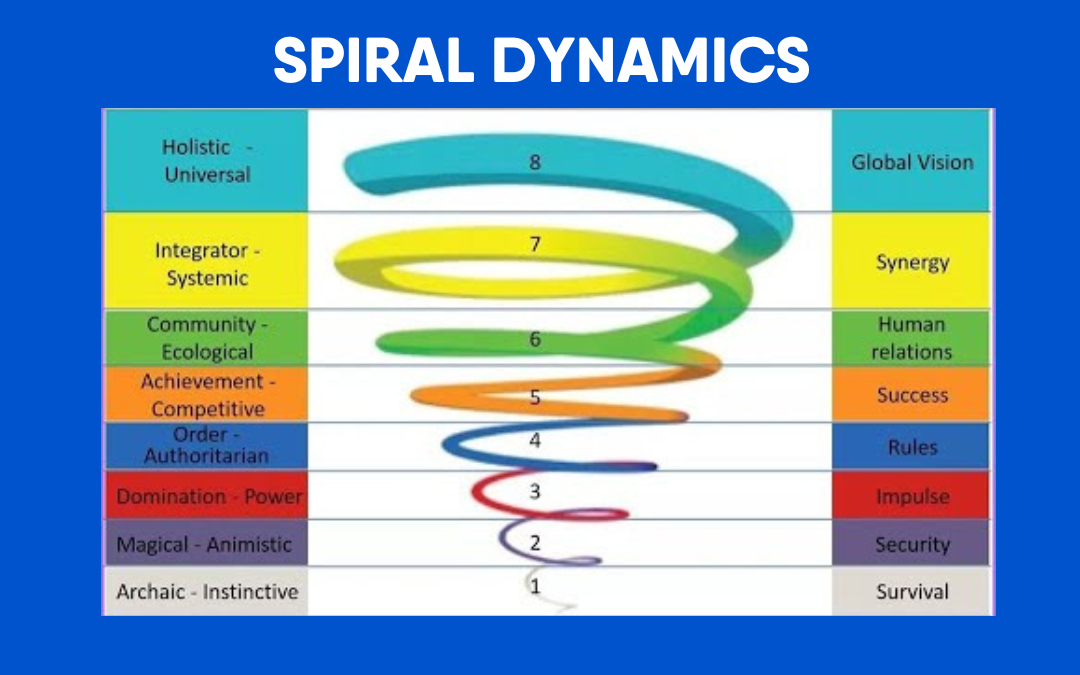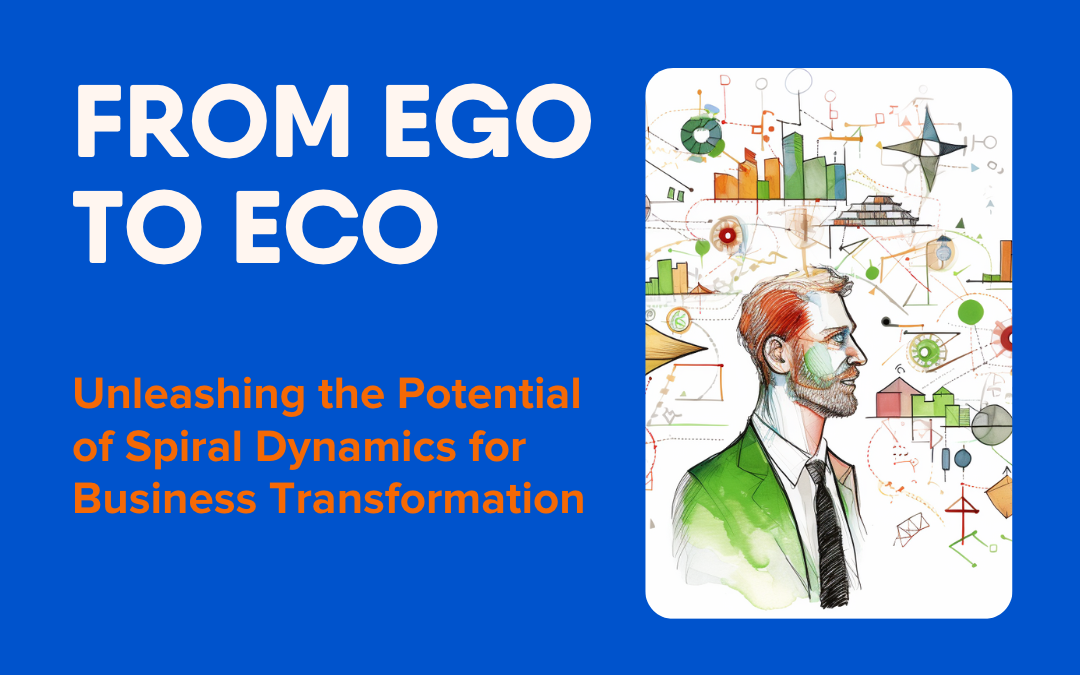In today’s ever-evolving business landscape, organizations are increasingly recognizing the importance of holistic approaches that consider not only profitability but also environmental sustainability and societal well-being.
It is within this context that the Spiral Dynamics framework emerges as a powerful tool for business transformation. By understanding and navigating the journey from ego to eco-consciousness, companies can unlock their full potential for sustainable success.
Understanding Ego and Eco
At the core of Spiral Dynamics is the understanding of the transition from ego-centric thinking to eco-centric thinking.
Ego-centric thinking is characterized by self-interest, competition, and the pursuit of individual success.
On the other hand, eco-centric thinking emphasizes interconnectedness, collaboration, and the well-being of the larger ecosystem.
By acknowledging and addressing the limitations of ego-centric thinking, businesses can embrace a more inclusive and sustainable approach.
The Stages of Spiral Dynamics
Spiral Dynamics outlines a series of stages or levels of consciousness that individuals and organizations can progress through. These stages are represented by a color-coded system, each denoting a different set of values and beliefs. The stages include beige (survivalist), purple (tribal, animistic), red (dominant), blue (authoritarian), orange (achiever), green (pluralistic, community), yellow (integrative), and beyond. Each stage builds upon the previous one, with the later stages incorporating and transcending the values of the earlier ones.

Applying Spiral Dynamics in Organizations
To effectively apply Spiral Dynamics in organizations, a deep understanding of the framework is essential. It is crucial to recognize that individuals within an organization may be at different stages of consciousness, and each stage brings its own strengths and limitations. By identifying the predominant stage within the organization, leaders can tailor their strategies and communication approaches to foster growth and facilitate the transition to higher stages of consciousness.
Benefits of using Spiral Dynamics in Organizations
The benefits of utilizing Spiral Dynamics in organizations are numerous. Firstly, it provides a common language and framework for understanding and discussing the different stages of consciousness. This shared understanding can enhance communication, collaboration, and empathy within teams and across departments. By recognizing and valuing the diversity of perspectives, organizations can foster a culture of inclusivity and innovation.
Furthermore, Spiral Dynamics enables organizations to identify areas of potential conflict and develop strategies to mitigate them. By understanding the underlying values and beliefs driving individuals’ behaviors, leaders can proactively address conflicts and promote healthy dialogue and resolution. This leads to a more harmonious and productive work environment.
Implementing Spiral Dynamics for Meaningful Change
Implementing Spiral Dynamics for meaningful change requires a multi-faceted approach. It begins with leadership commitment and buy-in to the principles of Spiral Dynamics. Leaders must serve as role models, embodying the values and behaviors that align with eco-centric thinking. Additionally, organizations must invest in training and development programs to build awareness and understanding of Spiral Dynamics among employees at all levels.
A crucial aspect of implementation is the creation of systems and processes that support eco-centric thinking. This includes revisiting organizational structures, decision-making processes, and reward systems to align with the values and principles of Spiral Dynamics. By embedding these changes into the fabric of the organization, businesses can ensure long-term sustainability and transformation.
Challenges and Considerations in Harnessing Spiral Dynamics
While Spiral Dynamics offers immense potential for business transformation, there are challenges and considerations that organizations must navigate. Firstly, it requires a significant shift in mindset and culture, which can be met with resistance from individuals who are comfortable with the status quo. Change management efforts must be comprehensive and inclusive, addressing concerns and providing support to those who may struggle with the transition.
Additionally, organizations must be mindful of the potential for misinterpretation and misuse of Spiral Dynamics. It is important to approach the framework with humility and openness, recognizing that it is just one tool in the broader toolkit of business transformation. Organizations must carefully balance the application of Spiral Dynamics with other relevant methodologies and frameworks to ensure holistic and effective change.
Case studies of Organizations using Spiral Dynamics
Numerous organizations have successfully utilized Spiral Dynamics to drive meaningful change. One such example is Patagonia, the outdoor apparel company known for its commitment to environmental sustainability. By embracing eco-centric thinking and aligning its operations with ecological responsibility, Patagonia has not only achieved financial success but has also become a role model for corporate environmental stewardship.
Another example is Buurtzorg, a Dutch home care organization. Buurtzorg operates on the principles of self-management and holistic care, empowering its nurses to take ownership of their work and prioritize the well-being of their patients. By embracing the principles of Spiral Dynamics, Buurtzorg has achieved high levels of employee satisfaction, improved patient outcomes, and cost efficiencies.
Training and Resources for Implementing Spiral Dynamics
Implementing Spiral Dynamics in an organization requires knowledge and expertise. Fortunately, there are various training programs and resources available to support businesses on their journey. These resources range from workshops and seminars to online courses and coaching programs. Organizations can also engage external consultants with experience in Spiral Dynamics to guide them through the implementation process.
Conclusion: Embracing Change and Building a Sustainable Future
In conclusion, the journey from ego to eco-consciousness is a critical path for organizations seeking sustainable success in today’s business landscape. Spiral Dynamics offers a powerful framework for understanding and navigating this journey, enabling businesses to unlock their full potential. By embracing eco-centric thinking and aligning their strategies, culture, and decision-making processes with the principles of ecological responsibility and societal impact, organizations can not only thrive financially but also contribute positively to the world around them.
As we move forward, it is essential for businesses to recognize that transformation requires a collective effort. By fostering a culture of inclusivity, collaboration, and continuous learning, organizations can build the resilience and adaptability needed to thrive in an ever-changing world.
Let us embrace the transformative power of Spiral Dynamics and work together to build a sustainable future where business success goes hand in hand with environmental stewardship and societal well-being.
Ready to learn more about working with us and unleashing your leadership potential?
Want to think about it some more?
Let's connect
Our social media is where we regularly share tips and content for balancing life and business and enjoying both.

